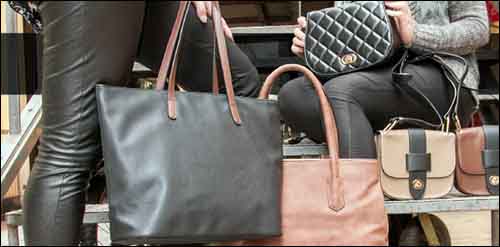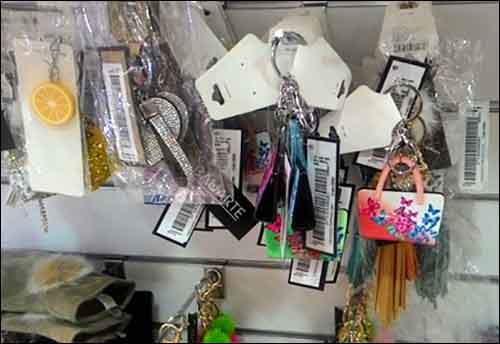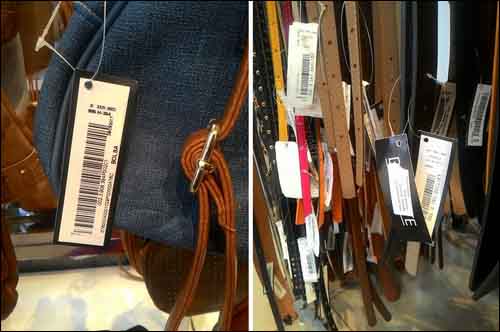Bauarte, which has been active in wholesale and retail sales of bags and accessories in the Bom Retiro region of São Paulo, Brazil, has offered domestic and imported products since 1995. This year, the company decided to invest in radio frequency identification technology. Its goal was to gain product visibility and enhance the customer experience.
To this end, the company implemented a complete solution for receiving, selling and transferring all merchandise that it commercializes, which has been tagged with RFID for the purposes of inventory control and traceability. What was intended initially to be just a test has already become a reality in the firm’s day-to-day business and roadmap for new investments.
All goods received are checked and tagged with RFID for product tracking and traceability purposes. Before products are moved to stock, an RFID read is performed on the conveyor belt, after which this information is stored in the system. The solution has brought benefits to customers, who can scan their products before heading to the cashier, thereby eliminating queues and expediting the checkout process.
With the information already registered for products in the system, the company reports, it becomes easier to control when a transfer is requested. Reading of the tags is performed to validate GS1‘s Electronic Product Codes (EPC) inside the sealed enclosures.
iTag Monitor middleware, developed by iTag Tecnologia, is responsible for reading the RFID tags. The software is present in all store processes, and validates and checks all labeled items.
“We chose iTag to be our RFID supplier, because from the first moment, with tests and surveys, until the implementation of the project, the company was always present in the processes,” says Paulo Ferreira Gonçalves, Bauarte’s director. “Bauarte met iTag through representatives. We knew the technology provided by the company and the reading and printing software, so we decided to do the first tests at the headquarters store.”
Deploying RFID was a positive experience for the company, Gonçalves reports. “We make it easier for our employees to work,” he says, “because now, instead of product to product, they can read dozens within seconds. We have confidence in the processes carried out, because we count on the traceability of the items. The challenge [regarding the implementation] was to reduce the processes, because they took hours. Today, they take only minutes.”
The RFID process at Bauarte works in the following way, according to Gonçalves: “We first carry out the purchase order or receive the goods by transfer. Items arrive at our headquarters, where we carry out order confirmation and generate RFID tags.” Products are labeled based on this confirmation.
Once tagged and checked, items are stored in stock, where they await the store’s replacement request or a transfer request from another location. “In the sales area,” Gonçalves says, “the customer chooses his merchandise and goes to the RFID portal, where he checks the items before proceeding to the box.”
Prior to the RFID system’s deployment, the merchandise was received manually, then was moved to the stock area. This process was one of the most error-prone, Gonçalves notes, because in some cases, merchandise was not checked. Bar-code scanning, unattended and slow, displeased shoppers. Transfers were also performed manually, and were subject to errors.
Bauarte sells an average of 50,000 pieces of merchandise per month. Its mission is to offer the best fashion accessory products, counting on a huge variety of domestic and imported goods.
Before the RFID solution was installed, every process was carried out in the traditional way, using only bar codes for inbound counts. A purchase order was made, employees received and counted the goods, and the boxes were then entered into stock. This process was followed when items were replaced after being sold, which was one of the most time-consuming tasks due to the bar codes.
“With RFID technology, we gain productivity and agility in these processes,” Gonçalves states. “We receive the goods by purchase order or transfer, we count these goods and then we generate an RFID tag for use in other processes.” With product information linked to the unique EPC of each label, the company can maintain control over the need for replacing goods or transferring them to other stores.
In the sales area, the reading of the items selected by customers is done before those goods are taken to the payment queue. In this way, the customer can proceed to the cashier only to finalize his or her purchase.
The implementation does not follow parameters set forth in the EPC Gen 2 standard for the generation of codes; however, Gonçalves says, the equipment meets all specifications of the standard. Readings are made via Acura Mercury 6 interrogators for the validation of tagged items that pass along the conveyors, and in the sales area for checking items selected by a customer before he or she proceeds to the cashier. An Acura Edge 50 reader checks the merchandise sold.
“The biggest challenge we had was the search for a new RFID vendor that would meet our needs and fit our process,” Gonçalves states, “without the need to change it.” The company determined that RFID would bring benefits to store processes, he adds. ITag Adhesive labels are used. The labels measure 7 centimeters by 2 centimeters (2.8 inches by 0.8 inch), contain an EM4124 chip and are tamper-resistant.
After the RFID system was implemented at Bauarte, Gonçalves says, “We reduced the time of logistics processes, eliminated divergent deliveries, increased accuracy and gained control of the items stored in stock, from tracking the parts throughout the processes. In store restocking and customer sales, we reduce the losses and, above all, we guarantee a new and faster purchase experience for the customer.”
The next steps are already being planned, Gonçalves reports. “We will now expand RFID within Bauarte, bringing processes such as inventories, inventory rupture and FIFO [first in, first out] control. We want to demonstrate that we can reduce the time and the number of resources it takes to conduct an inventory count traditionally, with manual counting.” For Gonçalvez, it will also be possible to demonstrate that with total or partial inventory counts, the store can check items for rupture and make sure FIFO processes are being followed.
The iTag system works with Millenium ERP, developed by Millennium Network, which has been integrated with RFID technology. Communication works remotely, Gonçalvez says, because the data server works with cloud computing.




